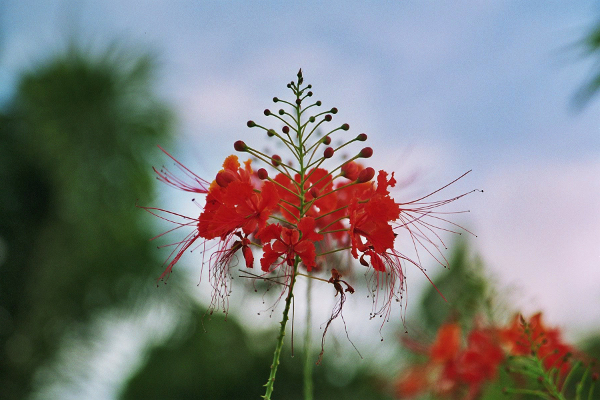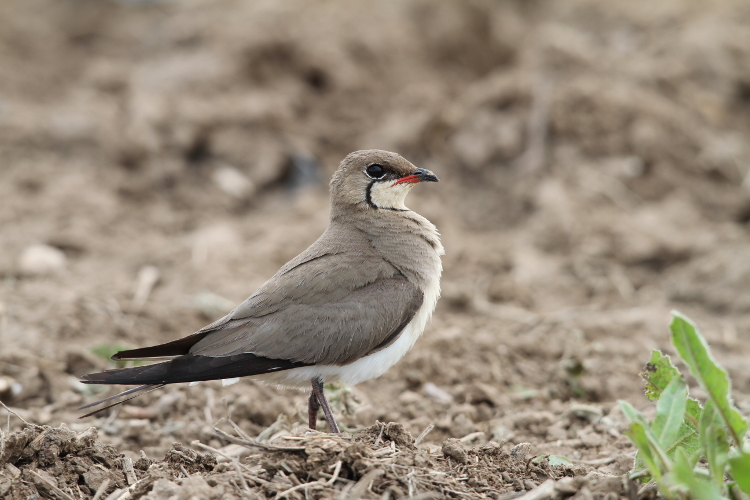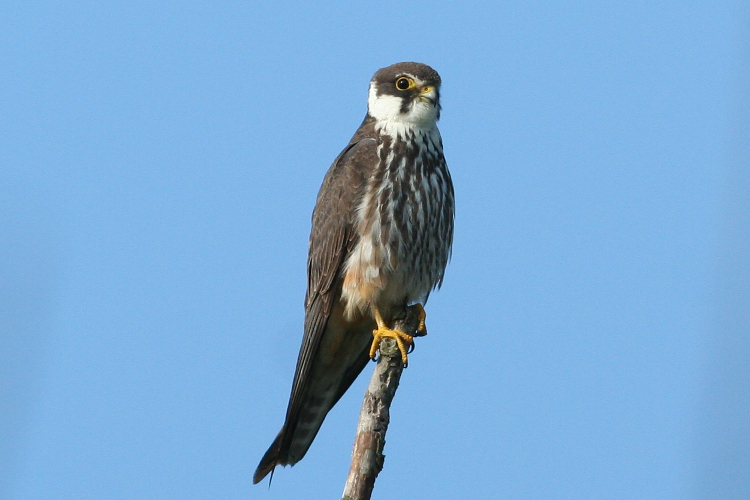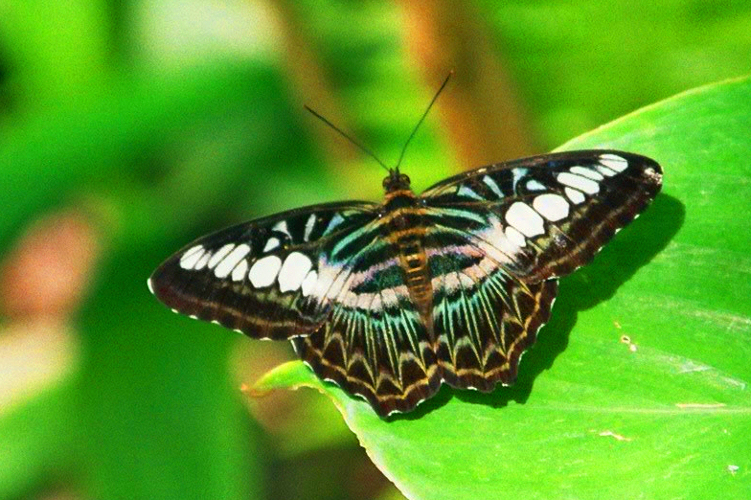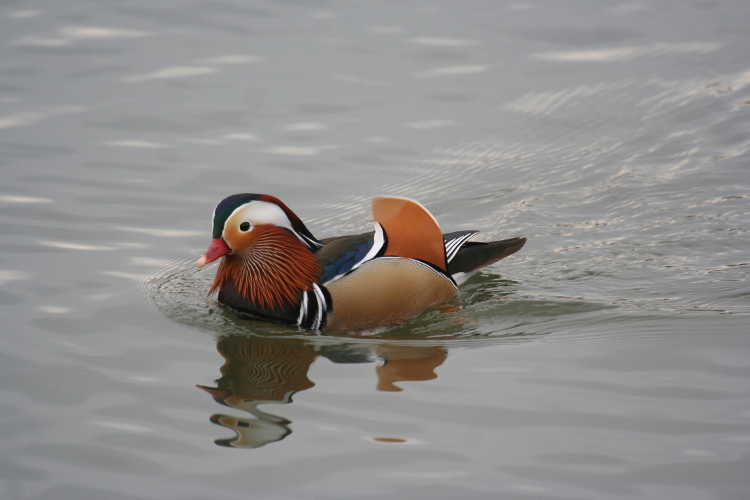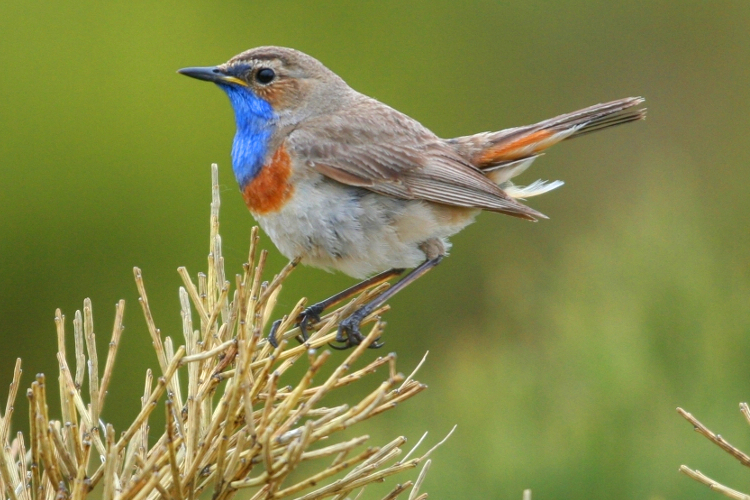LINKS





orientalbirdclub
Ayuwat Jearwattanakanok's BS
Tim Laman WildLife's WP
Festival de la photo de Montier-en-Der
National Geographic
Birds of the World
IOC World bird list
www.wikiaves.com
www.ornitho.lu
www.ornitho.ch
www.faune-grandest.org
Guislain Simard's macro-photo
jewel-beetles
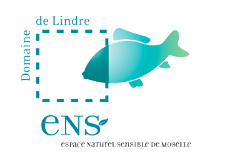





BORNEO
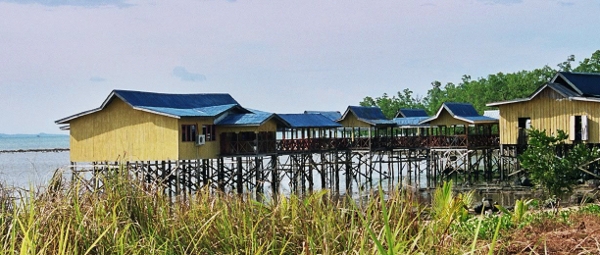
I visited the state of Sabah in the island of Borneo during a travel of three weeks in August 2007. From a geopolitical point of view, Sabah one of the two states of Malaysia (with Sarawak) is located in the third island of the world by the size, these two states forming what one calls Eastern Malaysia. Borneo evokes a world away from the civilisation, covered by a impenetrable jungle and populated with beheaders arborigeneous; such a vision is not so far away from the reality of what was this island into cubes times former to a few decades; but in Borneo, like everywhere else, time accelerated: nowadays, the island lives at the era of the communications and of the high-tech and the forest has great difficulty to resist the attacks of oil-palm tree plantations which nibble it unrelentingly.
The Malayan authorities are perfectly conscious that the disappearance of this forest would constitute an irremediable loss in term of biological but so economic heritage: eco-tourism is a good deal under development full which brings not bad in money to the country but other ways are to be explored to exploit this forest in an intelligent way. Too many forest companies or other multinationals eager to avoid urgently by carrying out rapids and substantial financial profits see in this forest only one nuisance which one can ransack and destroy without shame. And too many governments miss owe them while letting itself cram by the substantial benefit (in the form of taxes) that mirroiter these companies make them. The fact is that this forest evokes with the eyes of much a world of brutality, without spirit nor humanity, or the civilisation and the company are absent. But one could also point out that in the past, many people (civilisation pre-Colombians, Angkor, etc) succeeded in doing what the man of the era of the high-tech does not worry any more: to transform, thanks to a work of patience and ingeniousness of the covered areas of impenetrable forest in arranged garden; thus see the situation of this region of the south of Mexico which one names Chiapas: formerly, the Mayas had made of it a harbour of civilisation and the country could nourish several douzens of million inhabitants; today, it is the poorest state and more dilapidated country, succeeding in with sorrow containing a few hundreds of thousands of inhabitants torn by misery and violence.
Like the major part of the surrounding indo-peaceful area, Borneo has a flora and a fauna of an incomparable diversity and a particularism.
It is a characteristic of the tropical island regions to have a rate of relatively important endemism of the species. The avifauna of this large island consists of more than 350 species including 10% of endemic species with single kinds (and often threaten in their survival) like Bluwer's pheasant or enigmatic and uncategorized fruithunter or surprising it and quite as uncategorized bristlehead of Borneo. It there is only Sulawesi which can exceed Borneo for the rate of endemism of the species of birds.
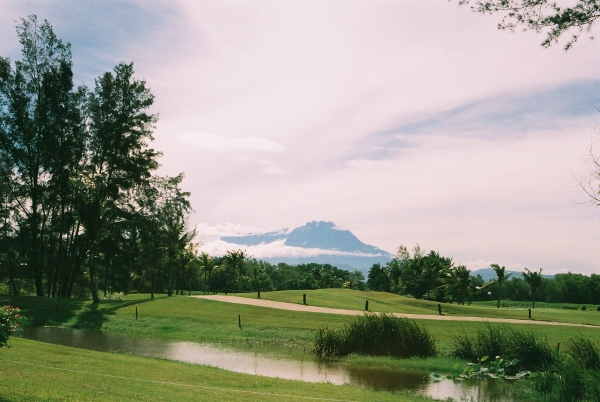
Mount Kinabalu
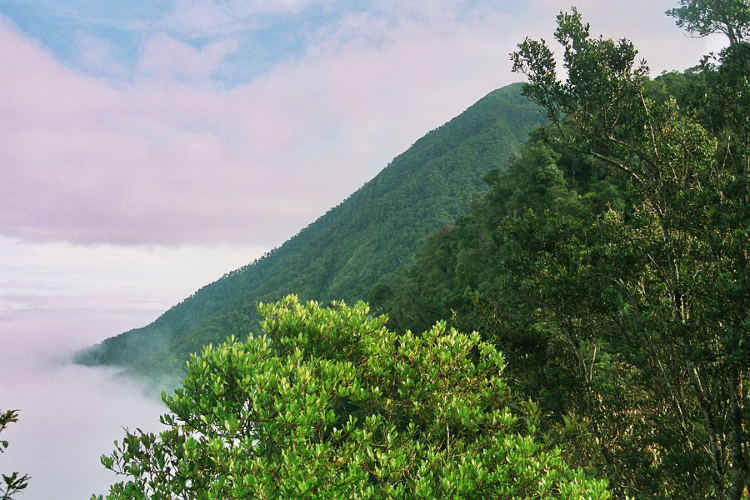
I could survey during several days this beautiful mountain which culminates with more 4000m what makes of it more the high summit of the island and one of most famous for the hiking.
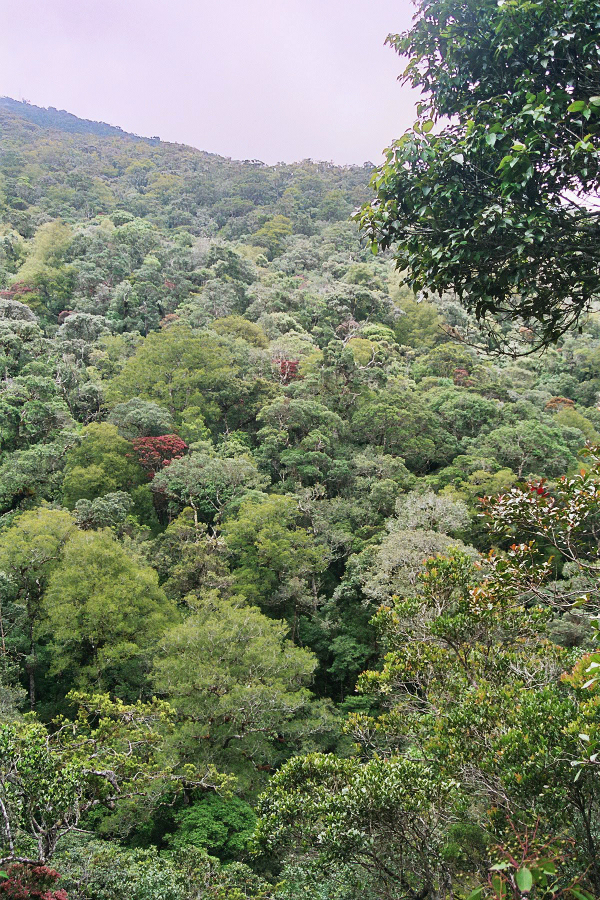
Being given the temperatures which reign at this place, one practically never sees snow on Kinabalu. It takes approximately a day of walk to reach the top of the mountain since the welcome center and the site is arranged perfectly with many paths which make from there the excursion only more pleasant, which more is properly held by the staff of the park (and in bonus, many thanks to Malayan people for their patience and their kindness). As I visited this park during month of August, the frequentation of the visitors was with her roof: it is quite nice to be able to meet to discuss with other visitors coming from any species from geographic origin or ethnic but for the quietude of the places, it is not forcing the ideal.
To also note that at this season, an international pedestrian competition is organized annually.From a weather point of view, the state of Sabah is wettest of Malaysia and the Kinabalu Mount profits from a phenomenon of drizzle quasi permanant and intermittant, which is not without creating some problem to take pictures.
Biological diversity is almost infinite there and the Kinabalu mount deserves to be traversed at any hour of the day like night, many animal species or vegetable are endemic as the golden-necked barbet one with the very limited distribution (there exists only on two mountains of the island) and the Kinabalu squirrel (which exists only on some mountains of the state of Sabah); Borneo is par excellence the island with the squirrels with step less than 20 species present of which more half are endemic, since the giant squirrel at the Whitehead's dwarf squirrel (which I could observe in the park) via the strange shrew-faced ground-squirrel.
Many other species of mammals are visible, of day like night, Borneo habrite several the large species cat-like ones like the clouded leopard and the bay cat but the majority have night manners and are seldom seen; on the other hand, no monkey is visible inside the park. The birds are one of principal attractions of the place and of many endemic species can be there to be observed, most common being the green magpie, the bornean treepie (endemic, common, noisy but not easy to observe), the ashy drongo, the mountain black-eye (endemic, very common to the neighbourhoods of 3000m), the golden-necked barbet, etc...
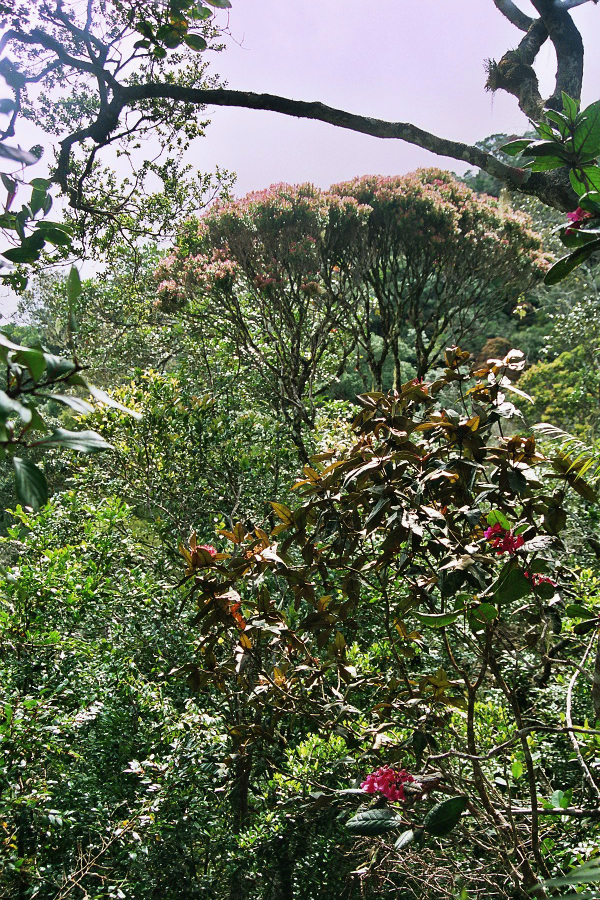
Lastly, not to neglect the other wealths of the park like the insects (several splendid butterflies like the Andromaque butterfly, of which the male, smaller but more coloured than female N is than with high altitude) and the floral wealths.
Sepilok
Sepilok is located at north east of the state of Sabah meadows of the coast and is accessible by the road; since the MT Kinabalu, the road gives access the reserve of Pooring-waters, leisure park very attended in August and which contains a farm with the butterflies where it is possible to admire several particular species of the region indo-discomfort like the rajah Brooke's birdwing or the endemic Borneo birdwing, found only in mountain's forest.
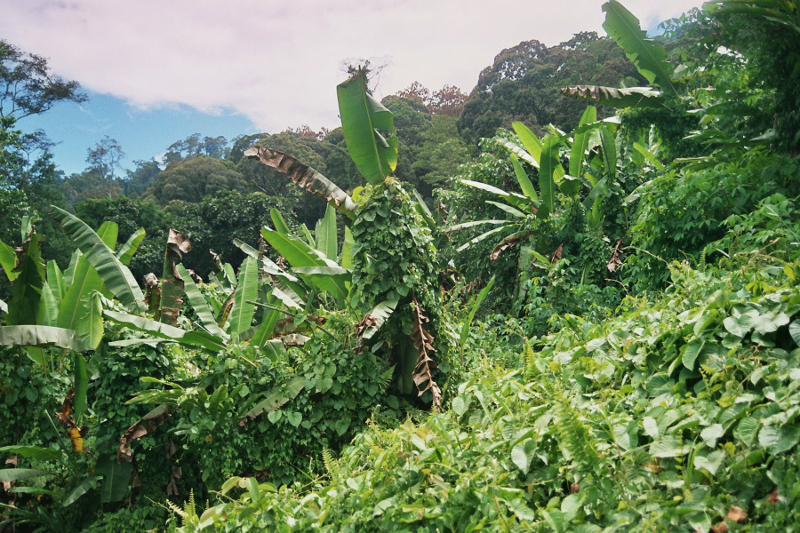
The reserve contains also an underground cave inhabited by bats.
I then reached in a few hours the village of Sepilok by taking main roads whose landscape of the neighbourhoods let show through at which point the plantations of palm trees with oil invaded the landscape; I practically did not see only one hectare of true forest during the travel. Sepilok, forest zone provided well is one of the most famous sanctuaries for the orang-utans; this large peaceful monkey attends the basic jungles altitude of Sumatra and Borneo where the survival of the species is strongly threatened by logging and disappearance of its habitat.

Sepilok has the double advantage of providing to the orang-utang the protection for which it requires well and also good deals with the owner for the park (of which the ticket for entry is not given!). The site also offers excellent point of observation of the forest to the top of large towers, which makes it possible to see the canopy with a panorama of 200m..
I could observe many birds, raptors, rhinoceros hornbills, imperial pigeons, etc. .
Other sites of the neighbourhoods, close to the dimensions, are the refuge of the other apes mascot of the large island: nasic, animal the really single one and which does not pay a mine, this monkey with the rather cowardly aspect with its bulbous nose which hangs such a fig exists only in Borneo where he attends the marshy coastal areas.
